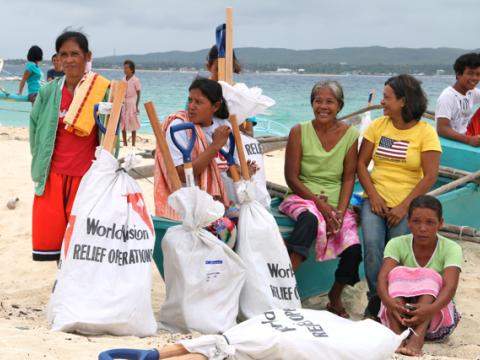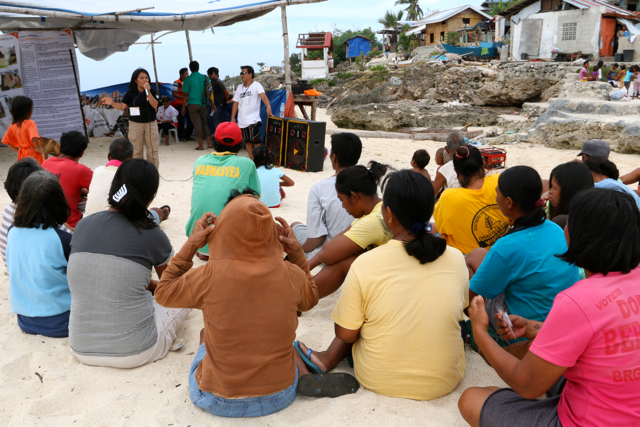Hope Soars on Gibitngil island

By Cecil Laguardia, Typhoon Haiyan Emergency Response, Communications Manager
The island is an eye-popper. Its white sand glistened under the sun’s scorching heat. Colorful fishing boats dotted the long shoreline for a day’s journey in the sea. Almost perfect for a tourism destination.
Gibitngil Island, touted to rival Palawan’s diving spots by many visitors, is part of Medellin municipality located at the northernmost tip of Cebu province in the Philippines. Medellin is approximately 100km from Cebu City and the island can be reached with a 15-minute boat ride from the village of Kawit.
This dot of a paradise with close to 2,000 residents was almost wiped clean by super typhoon Haiyan last November 2013.
When the typhoon landed, the majority of the families thought they would never survive. The typhoon’s winds tore through houses mercilessly. Alberto Sinambing, 64, said they took the typhoon warning seriously and tied the houses with ropes. He says, “We did the best we can but the houses were blown like boxes. There was nothing we can do.”
“I thought it was the end of the world. In my 66 years, this was the strongest typhoon that I have witnessed and endured”, adds Maria Borre. As they spoke, they expressed gratitude to organizations who came and help. “We are so relieved that help came. We were scared we would be forgotten”, says Melonie Empes, 43.
Barangay captain Sofonias Sinambong, 67, said the strongest typhoon that the island had survived was Oracan dated way back 1912. “The destruction it brought as told by my parents reminded me of Yolanda (Haiyan’s local name). We all prayed that everyone would be safe and we would be assisted from our misery”, he says.
World Vision is helping the survivors here rebuild over 100 houses damaged by the typhoon. During the meeting with the shelter team led by team leader Mike Macabasag, the barangay’s council members were upbeat when the housing materials were delivered. Gibitngil’s council members were in deep discussion on the delivery of materials around the island.
Macabasag said the residents’ cooperation was impressive. “Everyone worked hard to transport the materials including loading them to the boats and unloading them in the island”, he says. The council organized watchmen to keep the materials safe while supply delivery was being completed. Small boats were assigned to bring the materials to the other side of the island. It was bayanihan in action.
Entire families were involved in the process – and World Vision ensured that everyone’s voice was heard. “The work was unimaginably tough – especially that we need to ensure the safety of the volunteers while transporting the materials – but it is all worth it. Every smile and the excitement was a priceless reward in itself”, Macabasag adds.
Empes cannot contain her happiness that soon better housing will be built for her family. Living in a makeshift dwelling with tarpaulins as roof, which is very hot during the day and leaks when raining, she cannot wait for their ordeal to be over. She says with an impish smile, “We are more than grateful.”
World Vision is more that grateful to be allowed to join the people of Gibitngil in the journey to recovery.
